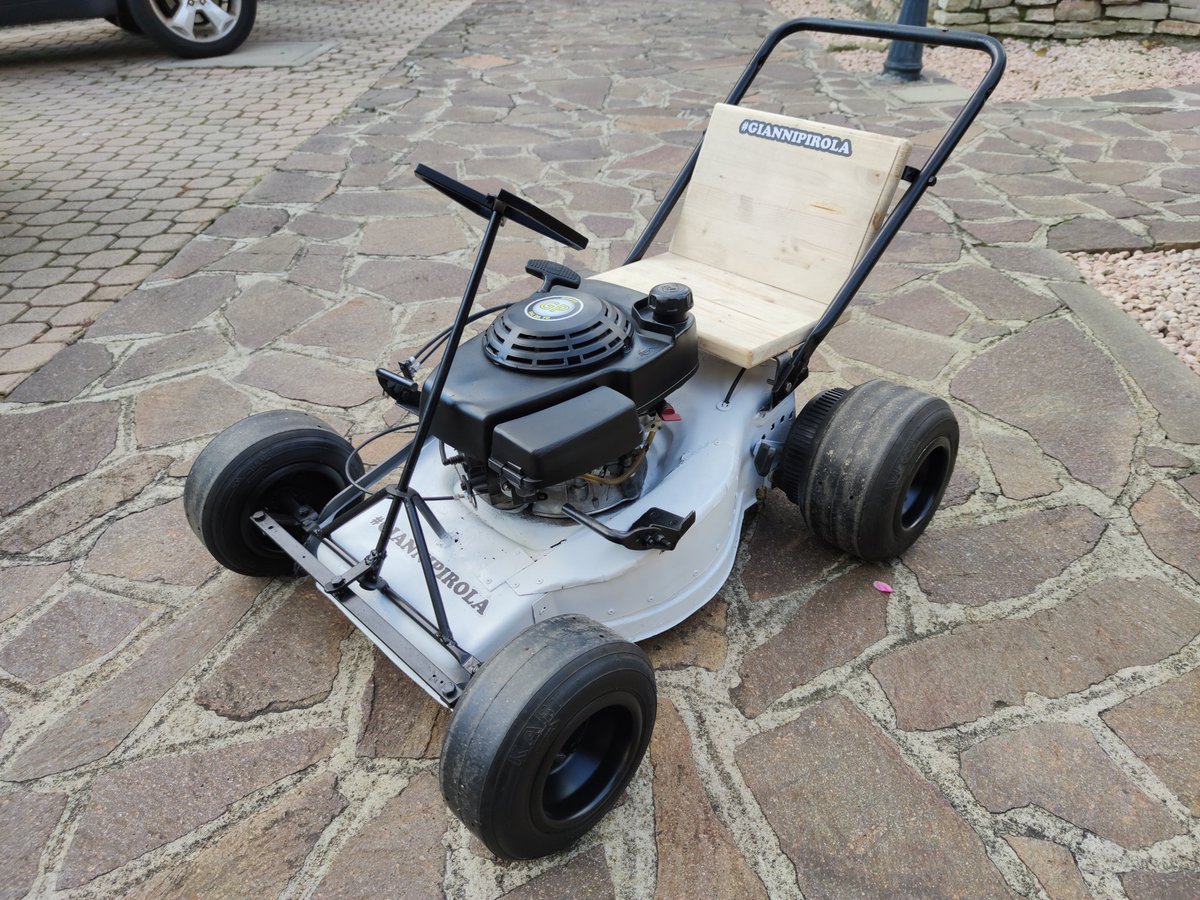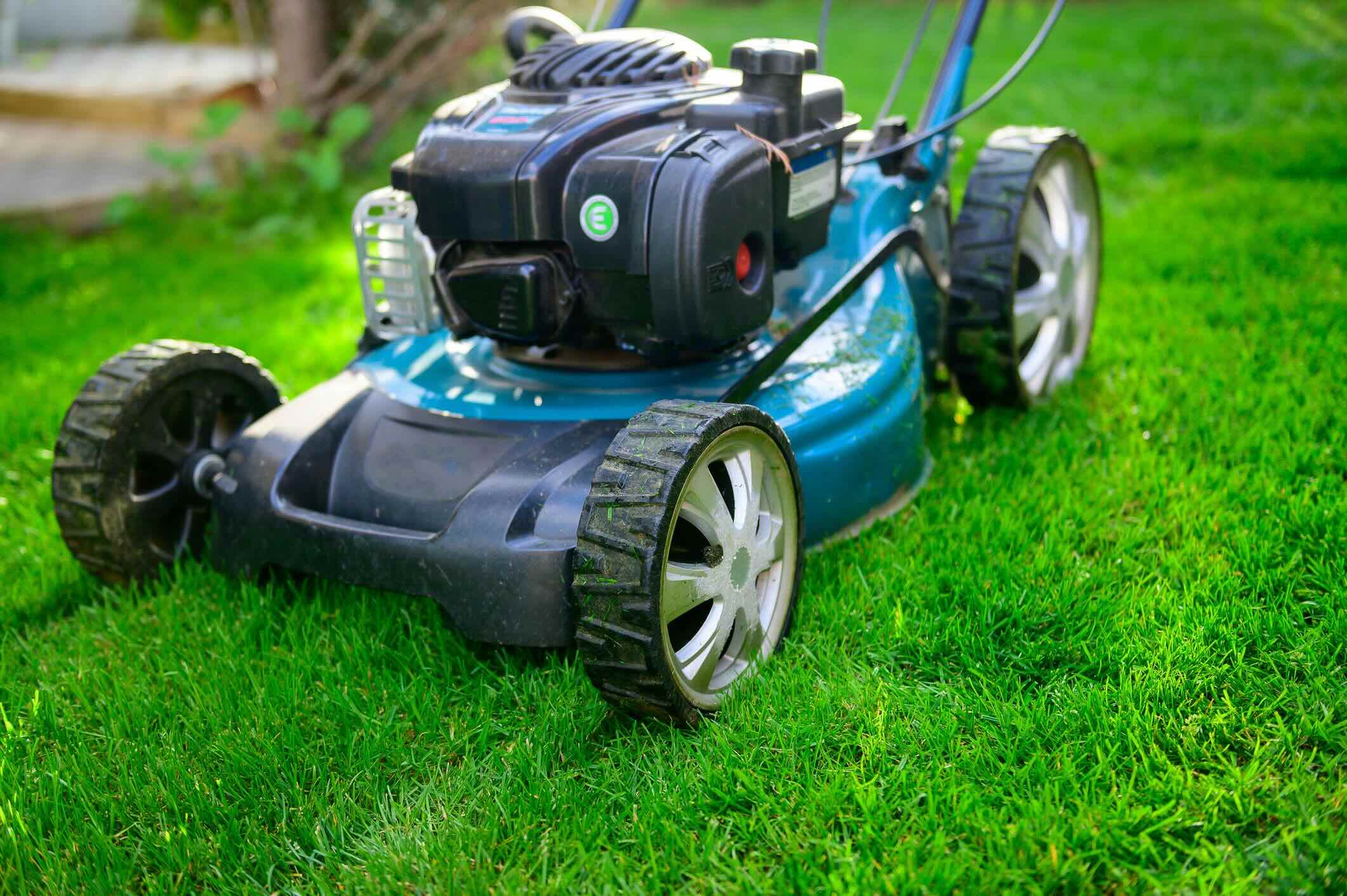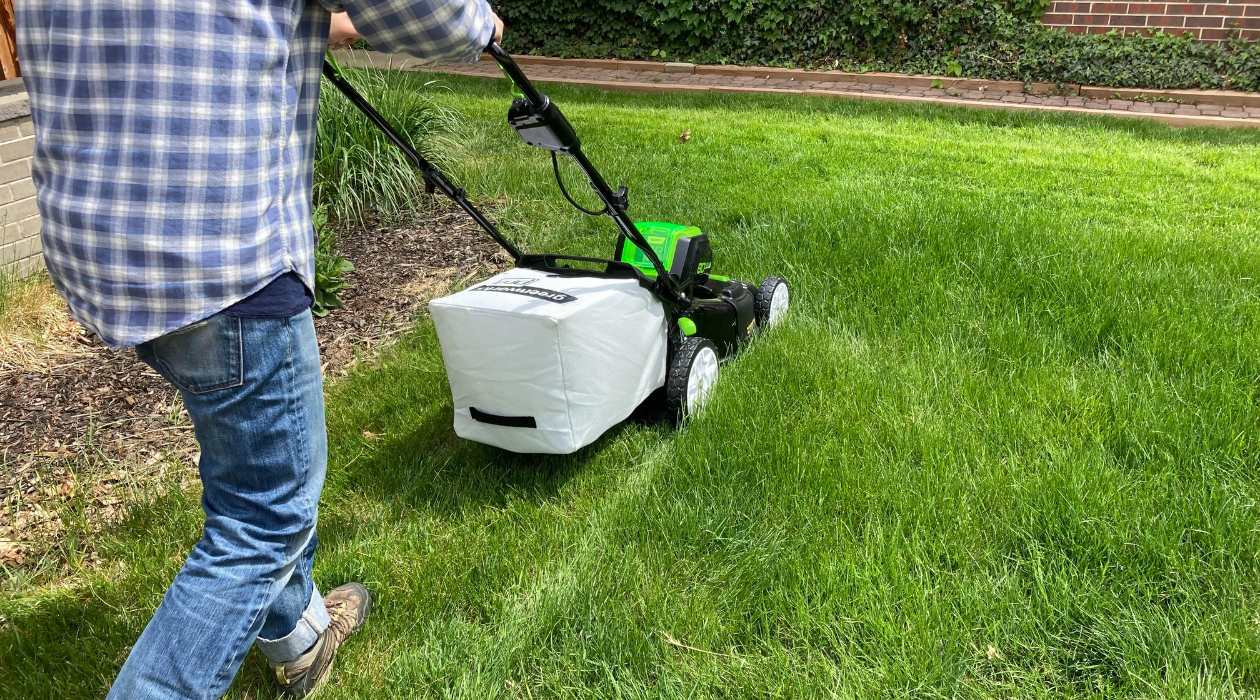Home>Gardening & Outdoor>Garden Tools & Equipment>What Causes A Lawnmower Engine To Surge


Garden Tools & Equipment
What Causes A Lawnmower Engine To Surge
Published: January 21, 2024
Discover the common reasons why lawnmower engines surge and how to troubleshoot them. Get expert tips on maintaining garden tools and equipment for optimal performance.
(Many of the links in this article redirect to a specific reviewed product. Your purchase of these products through affiliate links helps to generate commission for Storables.com, at no extra cost. Learn more)
Introduction
When it comes to maintaining a lush, well-manicured lawn, a reliable lawnmower is an indispensable tool. However, even the most meticulously cared-for lawnmower can encounter issues. One common problem that many users face is a lawnmower engine that surges. This erratic behavior can be frustrating and may hinder the mower's performance, leading to an uneven cut and an overall unsatisfactory result. Understanding the potential causes of this issue is crucial for effective troubleshooting and ensuring that your lawnmower operates at its best.
In this comprehensive guide, we will delve into the various factors that can lead to a lawnmower engine surging. From simple maintenance oversights to more complex mechanical issues, we will explore the potential culprits behind this common problem. By gaining insight into these causes, you will be better equipped to identify and address the issue, thereby optimizing your lawnmower's performance and reclaiming the pristine appearance of your lawn.
So, let's embark on a journey through the inner workings of lawnmower engines, unraveling the mysteries behind engine surging and empowering you to tackle this issue with confidence. Whether you're a seasoned lawn care enthusiast or a novice homeowner striving for a picture-perfect lawn, this guide will equip you with the knowledge needed to conquer the challenge of a surging lawnmower engine.
Key Takeaways:
- Regularly cleaning or replacing the air filter can prevent a lawnmower engine from surging, ensuring smooth and consistent operation.
- Maintaining the carburetor, fuel system, spark plug, and addressing mechanical issues are essential for minimizing the risk of engine surging and upholding the efficient operation of a lawnmower.
Read more: How To Rebuild A Lawnmower Engine
Dirty Air Filter
One of the primary culprits behind a lawnmower engine that surges is a clogged or dirty air filter. The air filter plays a crucial role in ensuring that the engine receives a consistent and clean air supply for combustion. Over time, especially in dusty or debris-laden environments, the air filter can become clogged with dirt, grass clippings, and other debris, impeding the flow of air into the engine.
When the air filter is dirty or clogged, the engine may experience a fluctuating air intake, leading to irregular combustion and, consequently, engine surging. To address this issue, it is essential to inspect the air filter regularly and clean or replace it as needed. Most lawnmower air filters are easily accessible and can be cleaned with compressed air or warm, soapy water. If the filter is excessively soiled or damaged, it is advisable to replace it with a new one to restore optimal airflow to the engine.
Regular maintenance of the air filter is key to preventing engine surging attributed to restricted airflow. By keeping the air filter clean and free of debris, you can promote smooth and consistent engine operation, thereby enhancing the overall performance of your lawnmower.
Carburetor Issues
The carburetor is a critical component of a lawnmower’s engine, responsible for mixing air and fuel in the correct ratio for combustion. When the carburetor encounters issues, it can significantly impact the engine’s performance, potentially leading to surging behavior. Several factors related to the carburetor can contribute to this problem.
One common issue is a clogged or obstructed carburetor. Over time, residue from old fuel, dirt, and other contaminants can accumulate in the carburetor, obstructing the flow of fuel and disrupting the air-fuel mixture. This can result in erratic engine behavior, including surging. Regular cleaning and maintenance of the carburetor, including the fuel passages and jets, are essential for preventing such issues.
In addition to blockages, the carburetor’s internal components, such as the diaphragm and needle valve, may wear out or become damaged, leading to irregular fuel delivery. When the carburetor fails to supply a consistent fuel mixture to the engine, surging can occur as a result of fluctuating power output. In such cases, inspecting and, if necessary, replacing worn or damaged carburetor components can help restore smooth and stable engine operation.
Furthermore, improper carburetor adjustments, such as an overly rich or lean fuel mixture, can also contribute to engine surging. Ensuring that the carburetor is properly tuned and calibrated according to the manufacturer’s specifications is crucial for maintaining optimal engine performance and mitigating surging issues.
By addressing carburetor-related issues through regular maintenance, cleaning, and adjustments, you can effectively minimize the likelihood of engine surging and uphold the efficient operation of your lawnmower.
Fuel System Problems
The fuel system of a lawnmower, encompassing the fuel tank, fuel lines, and carburetor, plays a pivotal role in delivering a consistent supply of clean fuel to the engine. However, various issues within the fuel system can contribute to engine surging, disrupting the combustion process and causing erratic operation.
One common culprit behind fuel-related surging is a clogged fuel filter. Over time, the fuel filter can become obstructed with sediment, debris, or contaminants present in the fuel, impeding the flow of fuel to the carburetor. This restriction can lead to inconsistent fuel delivery to the engine, resulting in surging behavior. Regularly replacing the fuel filter as part of routine maintenance is essential for preventing this issue and preserving the integrity of the fuel system.
In addition to the fuel filter, the fuel lines themselves can deteriorate or become kinked, leading to restricted fuel flow. Any impediment in the fuel lines can disrupt the steady supply of fuel to the engine, potentially causing surging and other performance issues. Inspecting the fuel lines for signs of damage, deterioration, or blockages and replacing them as needed is crucial for maintaining a reliable fuel delivery system.
Furthermore, the quality and condition of the fuel used in the lawnmower can impact its performance. Stale or contaminated fuel can lead to combustion irregularities, potentially resulting in engine surging. It is important to use fresh, clean fuel and to store it properly in a clean, sealed container to prevent contamination and degradation. Additionally, adding a fuel stabilizer when storing the lawnmower for an extended period can help maintain the fuel’s quality and prevent issues related to degraded fuel.
By addressing fuel system problems through regular inspection, maintenance, and the use of high-quality fuel, you can minimize the risk of engine surging and uphold the smooth and consistent operation of your lawnmower.
Regularly cleaning or replacing the air filter can help prevent a lawnmower engine from surging. A dirty air filter can restrict air flow, causing the engine to surge.
Spark Plug Issues
The spark plug is a vital component of a lawnmower’s ignition system, responsible for igniting the air-fuel mixture within the engine’s combustion chamber. When the spark plug encounters issues, it can significantly impact the engine’s performance, potentially leading to surging and other operational irregularities.
One common spark plug-related issue that can contribute to engine surging is fouling. Over time, the spark plug can become fouled with carbon deposits, oil, or other contaminants, hindering its ability to produce a strong and consistent spark. This can result in incomplete combustion and erratic engine operation, including surging. Regularly inspecting and cleaning or replacing the spark plug as part of routine maintenance is essential for preventing fouling-related performance issues.
In addition to fouling, the condition of the spark plug’s electrodes and gap can impact its effectiveness in igniting the air-fuel mixture. Worn or excessively wide electrode gaps can lead to weak or inconsistent sparks, potentially contributing to surging behavior. Ensuring that the spark plug is properly gapped and that its electrodes are in good condition is crucial for maintaining reliable ignition and mitigating surging issues.
Furthermore, the overall health of the ignition system, including the spark plug wire and ignition coil, can influence the spark plug’s performance and, consequently, the engine’s operation. Faulty or deteriorating components within the ignition system can lead to irregular spark delivery, potentially causing surging and other issues. Regular inspection of the ignition system components and addressing any signs of wear, damage, or malfunction can help sustain optimal spark plug performance and overall engine operation.
By addressing spark plug-related issues through regular maintenance, inspection, and replacement as needed, you can effectively minimize the likelihood of engine surging and uphold the efficient and reliable operation of your lawnmower.
Read more: How Does A Lawnmower Engine Work
Mechanical Problems
While issues related to the fuel and ignition systems are common culprits behind a lawnmower engine that surges, mechanical problems within the engine itself can also contribute to this erratic behavior. Understanding and addressing these mechanical issues is crucial for restoring the smooth and consistent operation of the lawnmower.
One mechanical factor that can lead to engine surging is improper valve clearance. The valves within the engine’s cylinder head must open and close at precise intervals to facilitate the intake of air and fuel and the expulsion of exhaust gases. If the valve clearance is incorrect, it can disrupt the engine’s combustion cycle, potentially resulting in surging and other performance issues. Regular inspection and adjustment of the valve clearance, as specified by the manufacturer, is essential for maintaining optimal engine operation and minimizing surging.
In addition to valve clearance, worn or damaged engine components, such as the piston rings or cylinder walls, can impact the engine’s compression and overall performance. Reduced compression due to worn components can lead to uneven power output and erratic operation, potentially manifesting as surging behavior. Ensuring that the engine’s internal components are in good condition and addressing any signs of wear or damage through proper maintenance and, if necessary, repairs can help mitigate these mechanical issues.
Furthermore, issues related to the engine’s governor, which regulates the engine’s speed, can also contribute to surging behavior. A malfunctioning or improperly adjusted governor can lead to fluctuating engine speed, resulting in surging during operation. Inspecting and, if needed, adjusting the governor to ensure smooth and consistent engine speed is essential for minimizing surging issues attributed to governor-related problems.
By addressing mechanical problems through regular inspection, maintenance, and necessary repairs, you can effectively minimize the likelihood of engine surging and uphold the efficient and reliable operation of your lawnmower.
Conclusion
As we conclude our exploration of the potential causes of a lawnmower engine that surges, it becomes evident that several factors, ranging from maintenance oversights to mechanical issues, can contribute to this common problem. By understanding these underlying causes, you are better equipped to identify and address the issue, thereby optimizing your lawnmower’s performance and reclaiming the pristine appearance of your lawn.
Regular maintenance and attentive care are paramount in preventing and mitigating engine surging. Simple tasks such as inspecting and cleaning the air filter, maintaining the carburetor, and ensuring a clean and reliable fuel supply can significantly impact the smooth operation of your lawnmower. Moreover, addressing spark plug-related issues and conducting thorough mechanical inspections are essential for sustaining optimal engine performance and minimizing the risk of surging.
By integrating these maintenance practices into your lawnmower care routine, you can foster a reliable and consistent operation, ensuring that your lawnmower remains a steadfast ally in maintaining a beautifully manicured lawn. Whether you are a seasoned lawn care enthusiast or a novice homeowner, the knowledge gained from this guide empowers you to tackle the challenge of a surging lawnmower engine with confidence and proficiency.
As you embark on this journey of lawnmower maintenance and troubleshooting, remember that each task, no matter how seemingly minor, contributes to the overall health and performance of your lawnmower. Embrace the role of a diligent caretaker, and your lawnmower will reciprocate with steadfast reliability and impeccable performance, allowing you to revel in the satisfaction of a flawlessly groomed lawn.
With a keen eye for maintenance and a proactive approach to addressing potential issues, you can ensure that your lawnmower remains a dependable companion in your quest for a verdant, well-kept lawn, free from the disruptions of engine surging.
Frequently Asked Questions about What Causes A Lawnmower Engine To Surge
Was this page helpful?
At Storables.com, we guarantee accurate and reliable information. Our content, validated by Expert Board Contributors, is crafted following stringent Editorial Policies. We're committed to providing you with well-researched, expert-backed insights for all your informational needs.















0 thoughts on “What Causes A Lawnmower Engine To Surge”